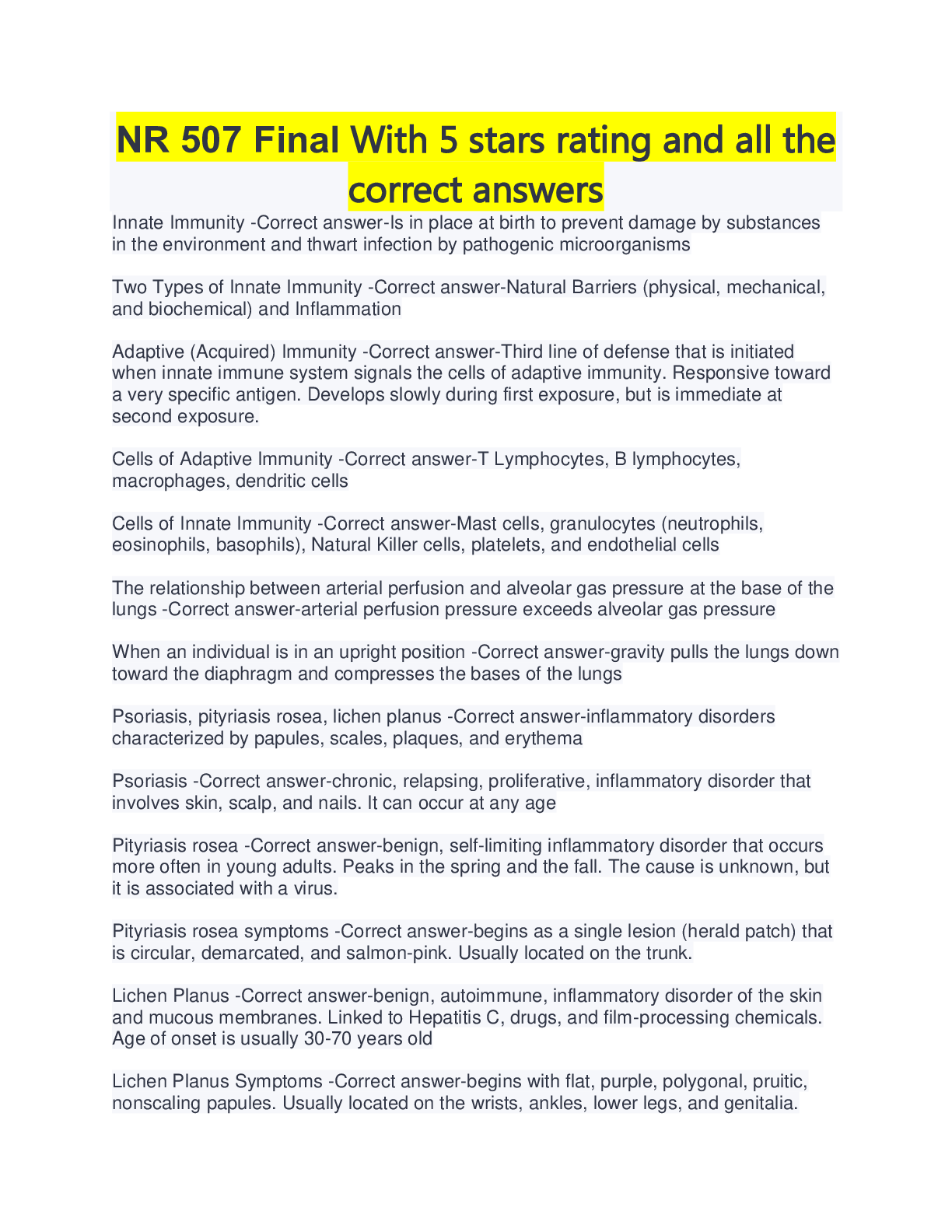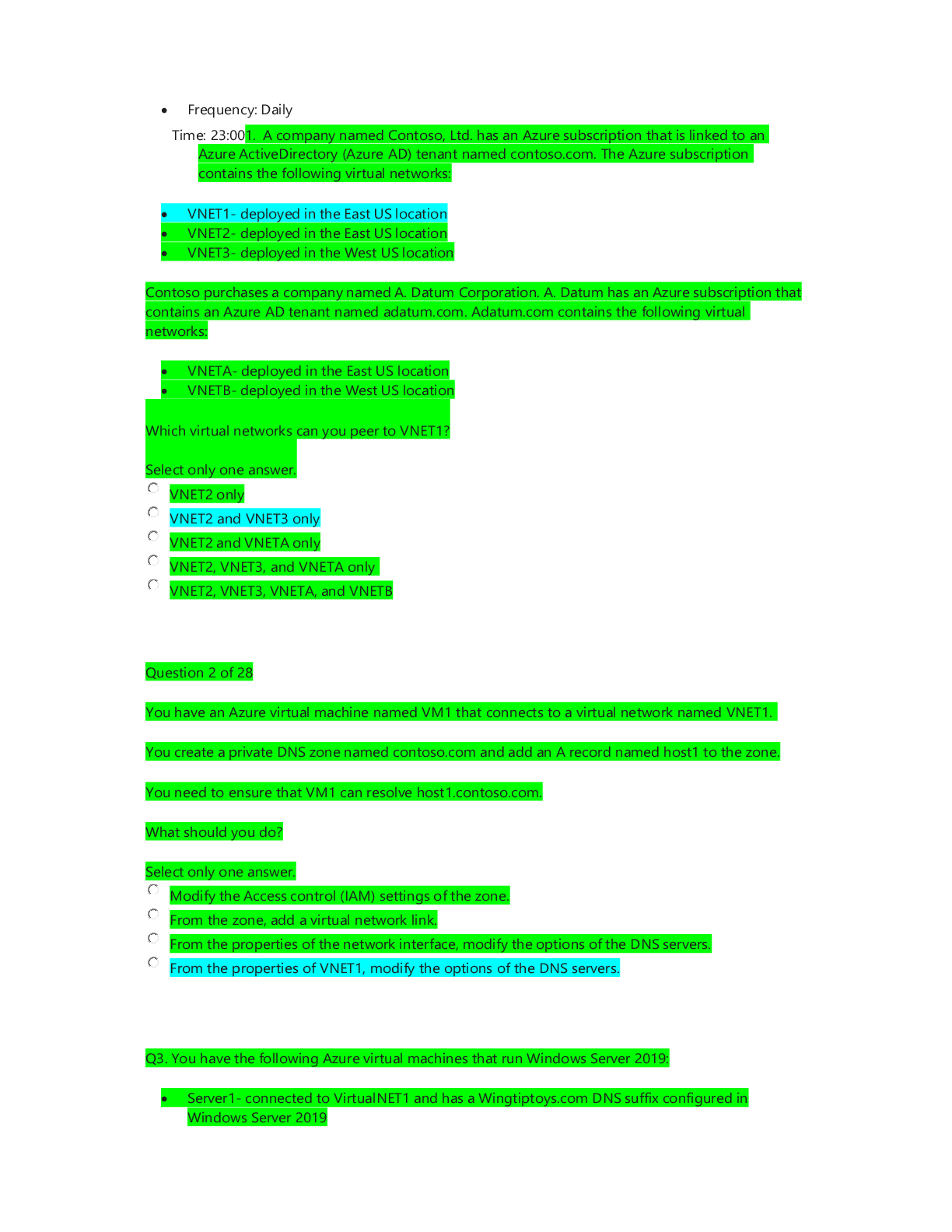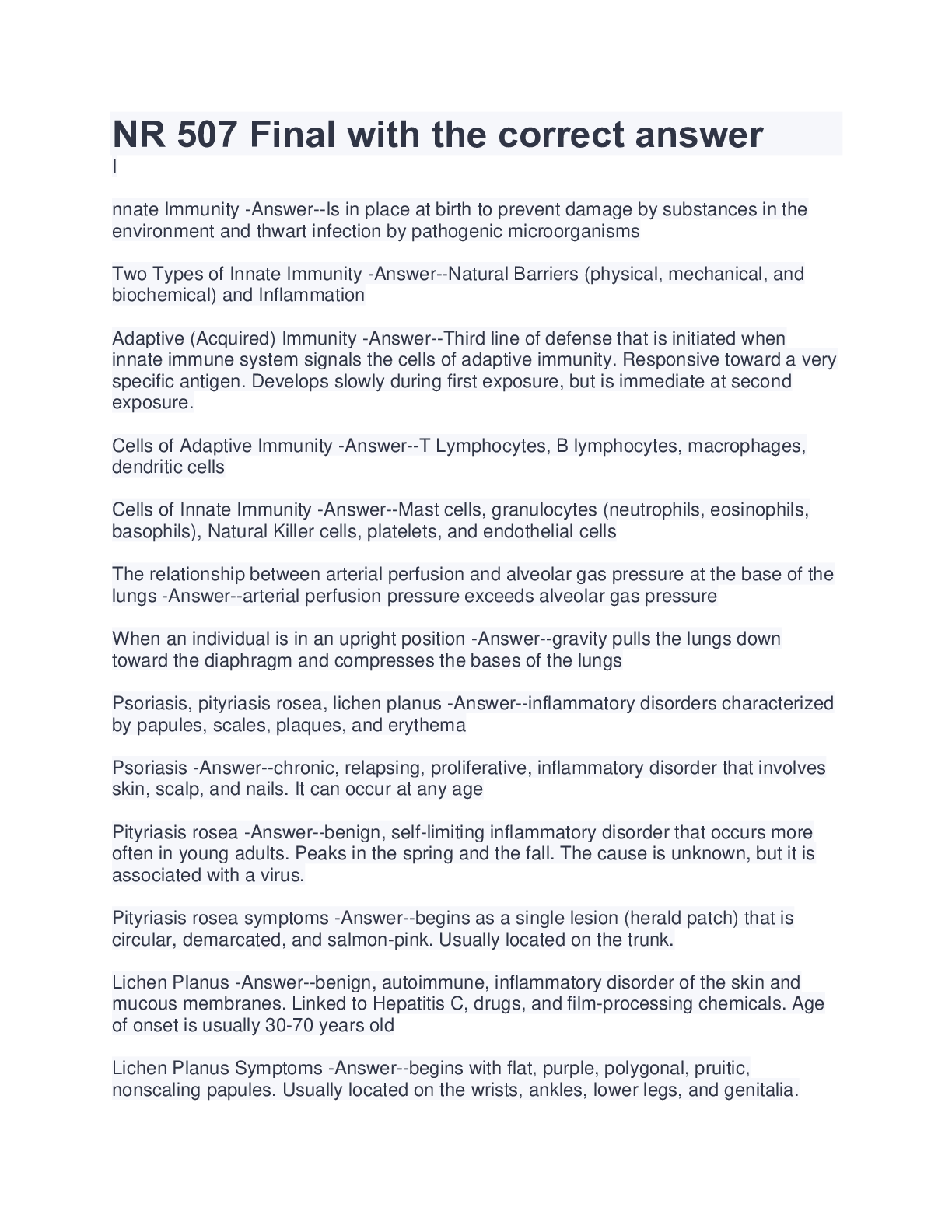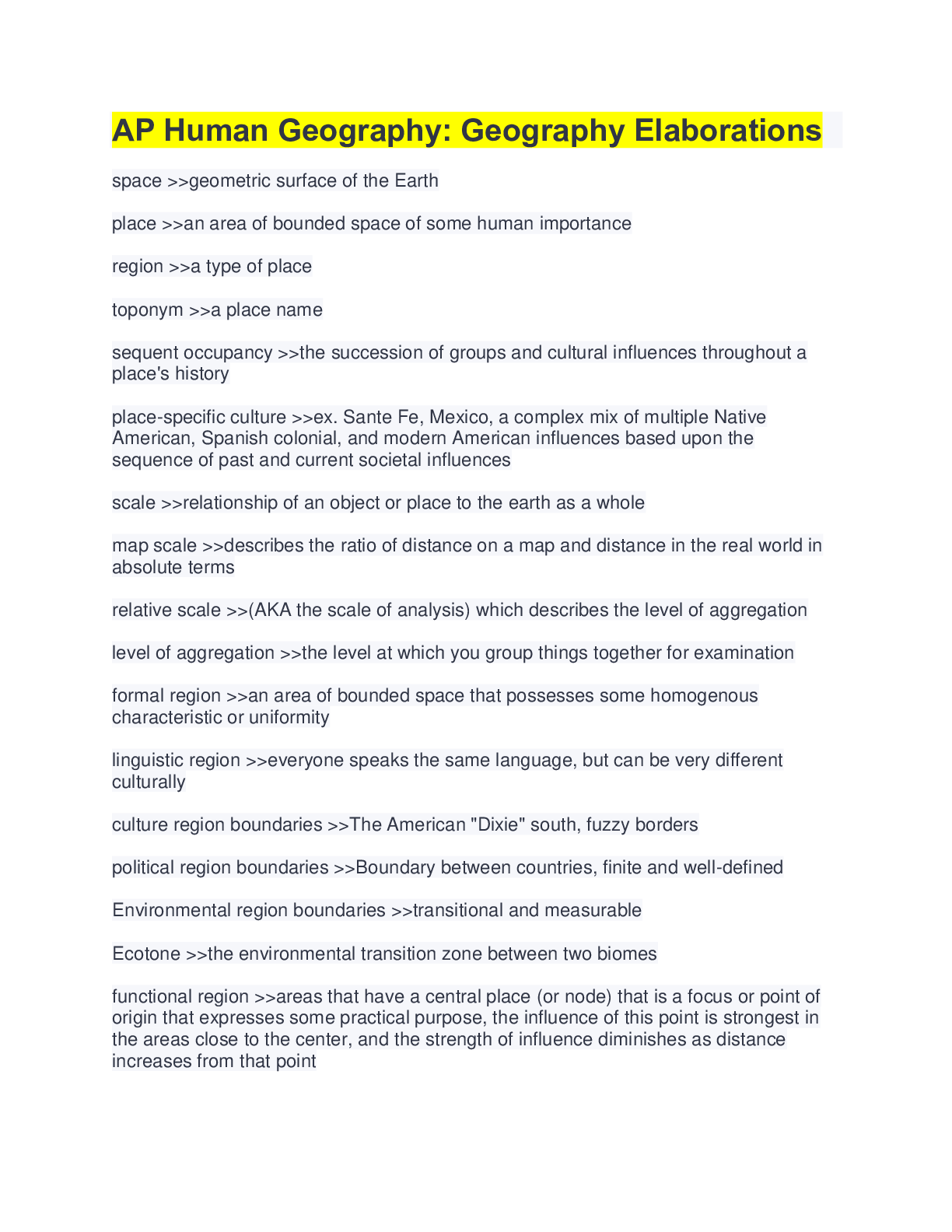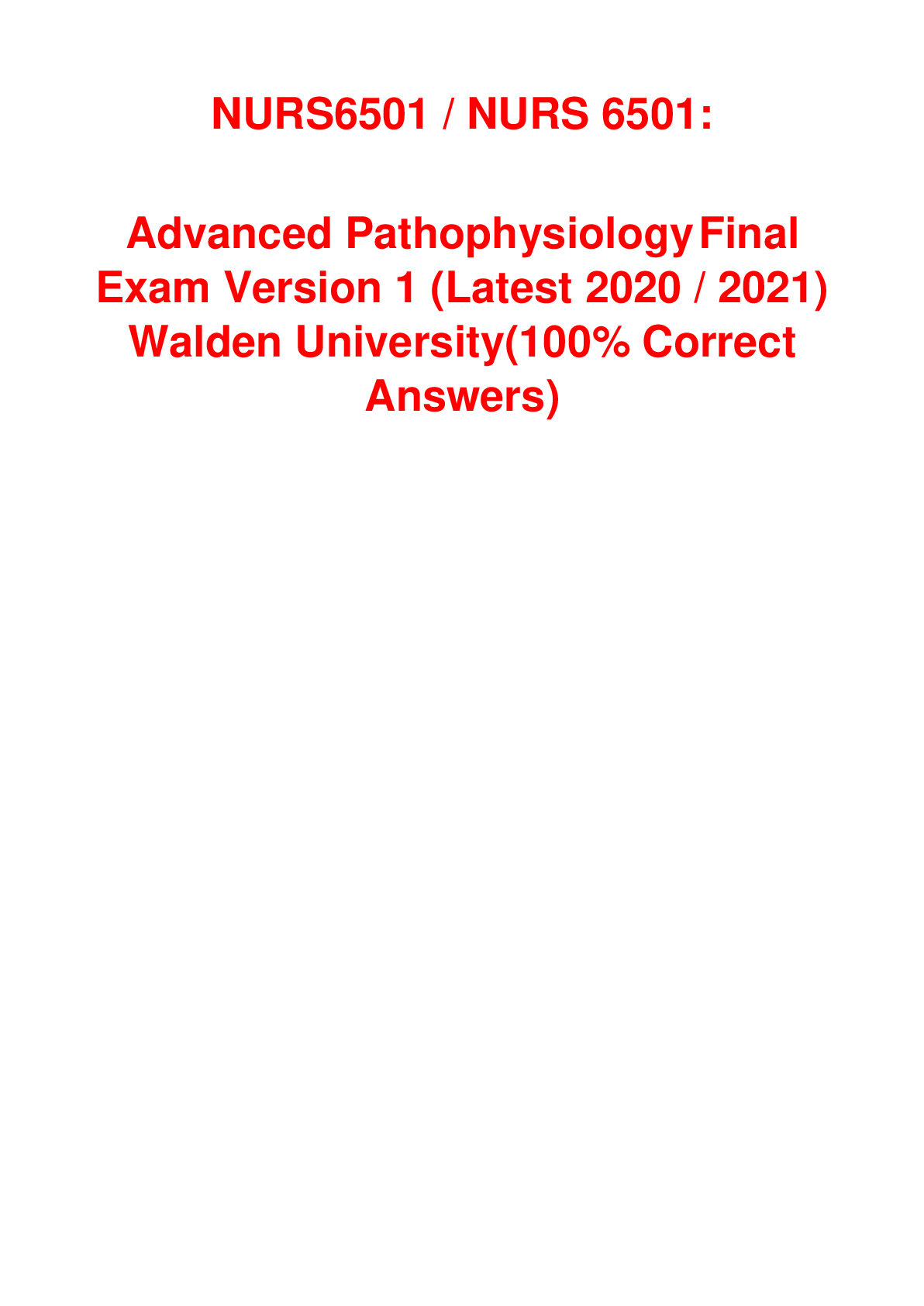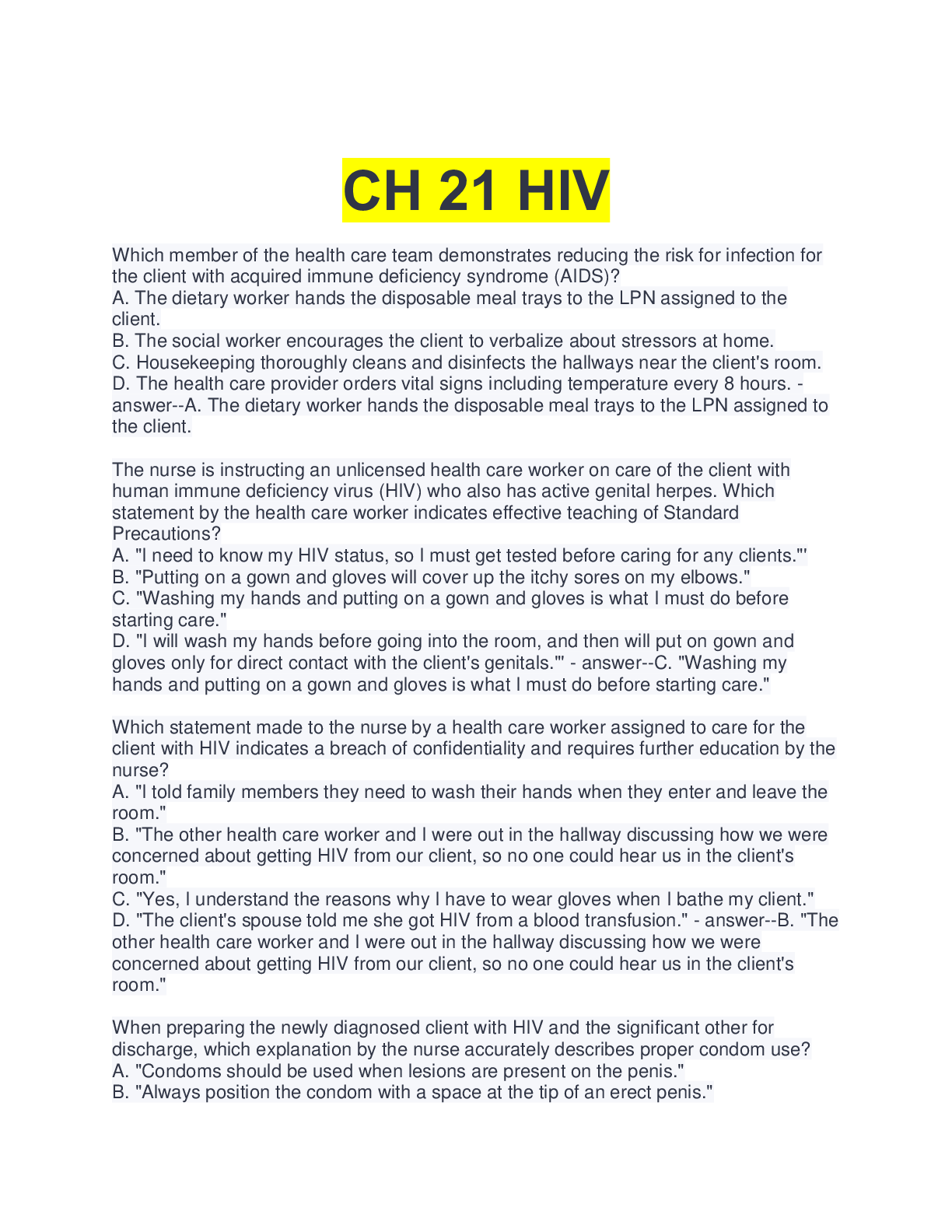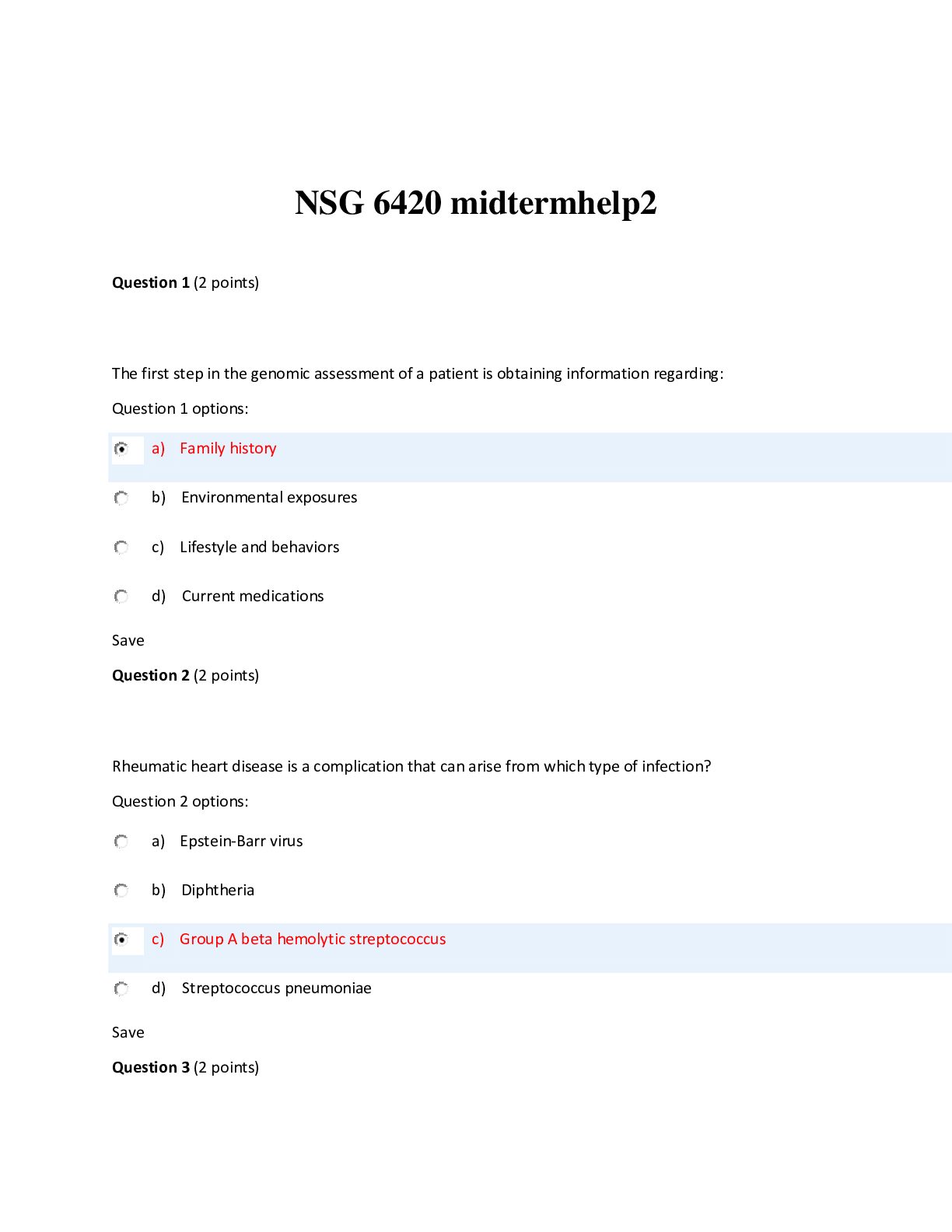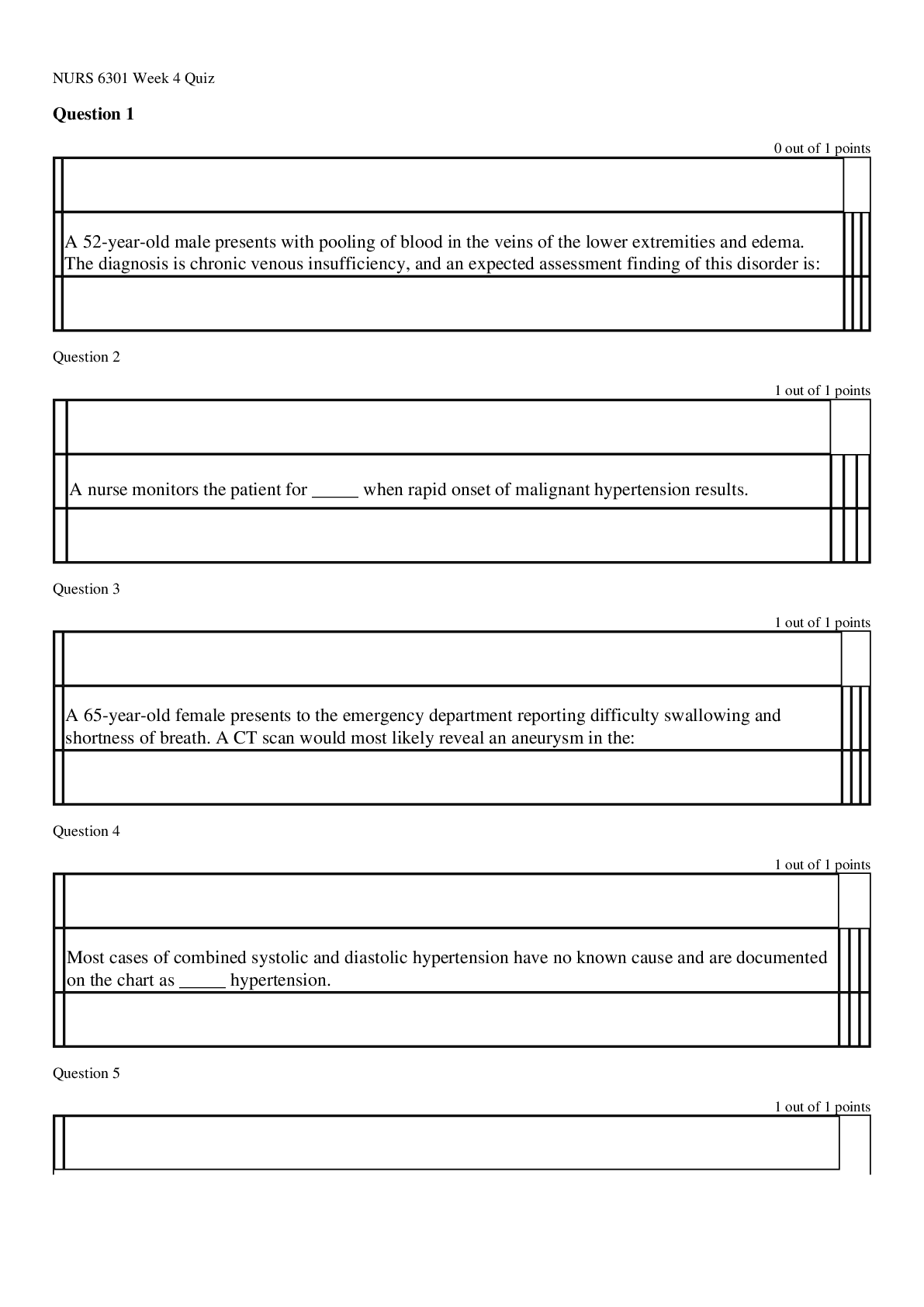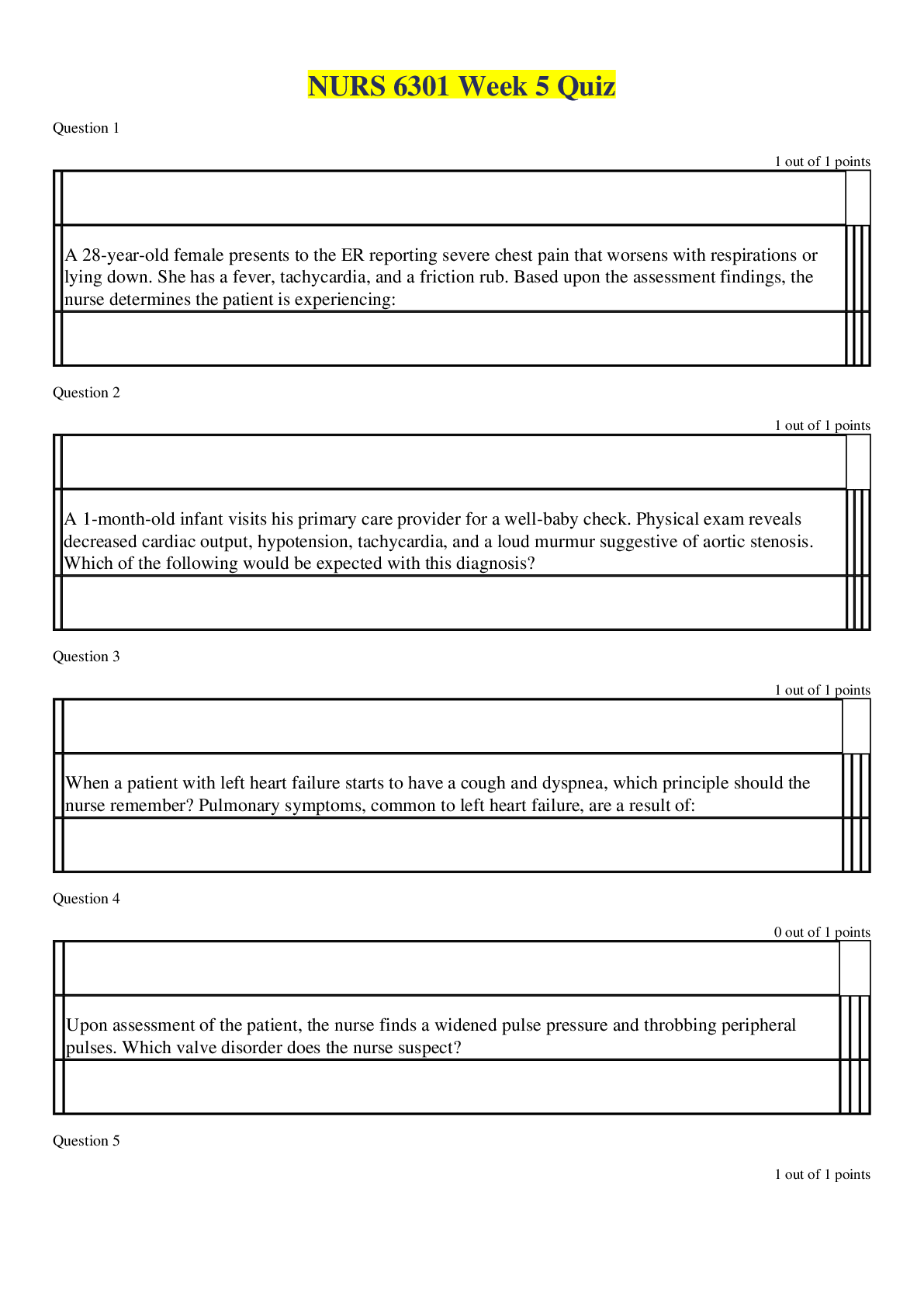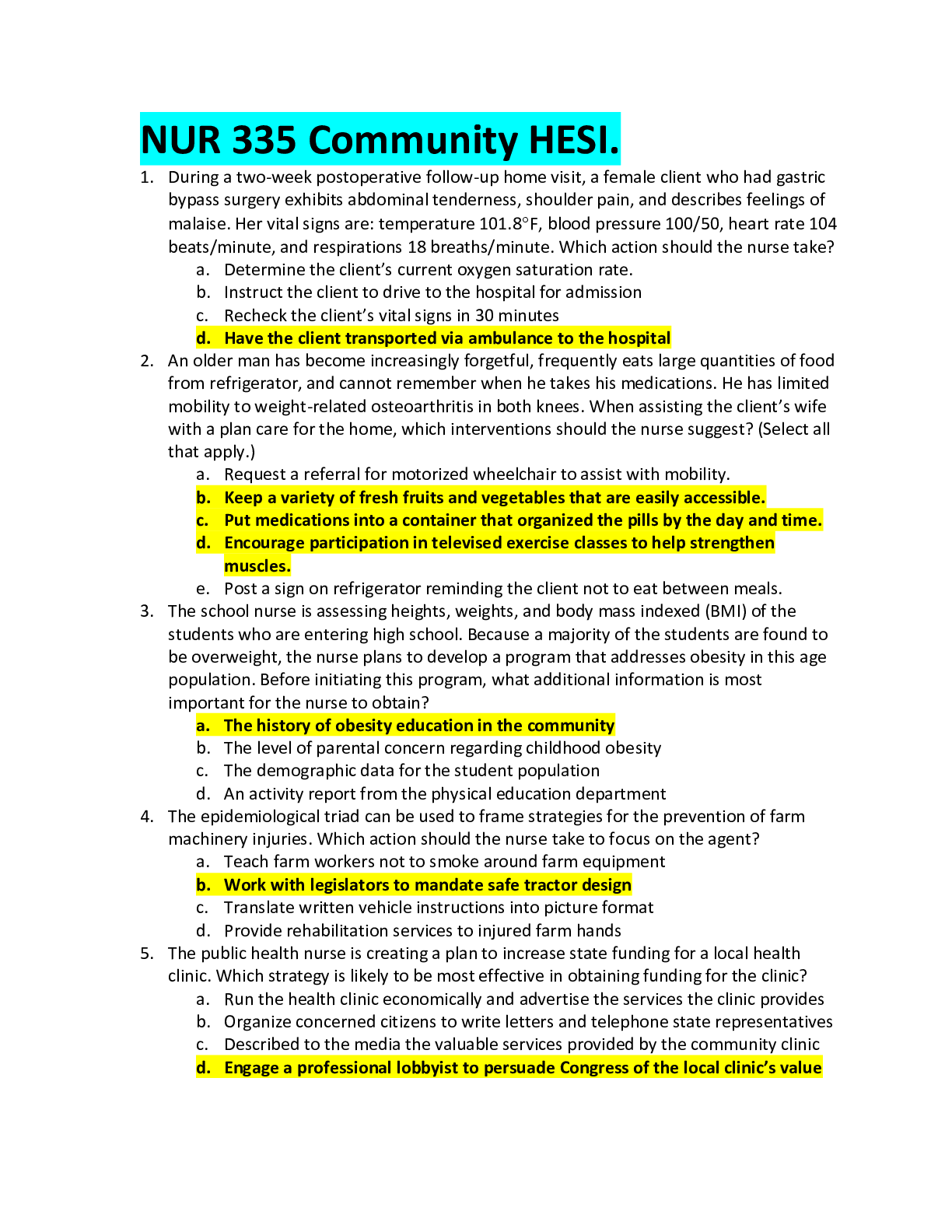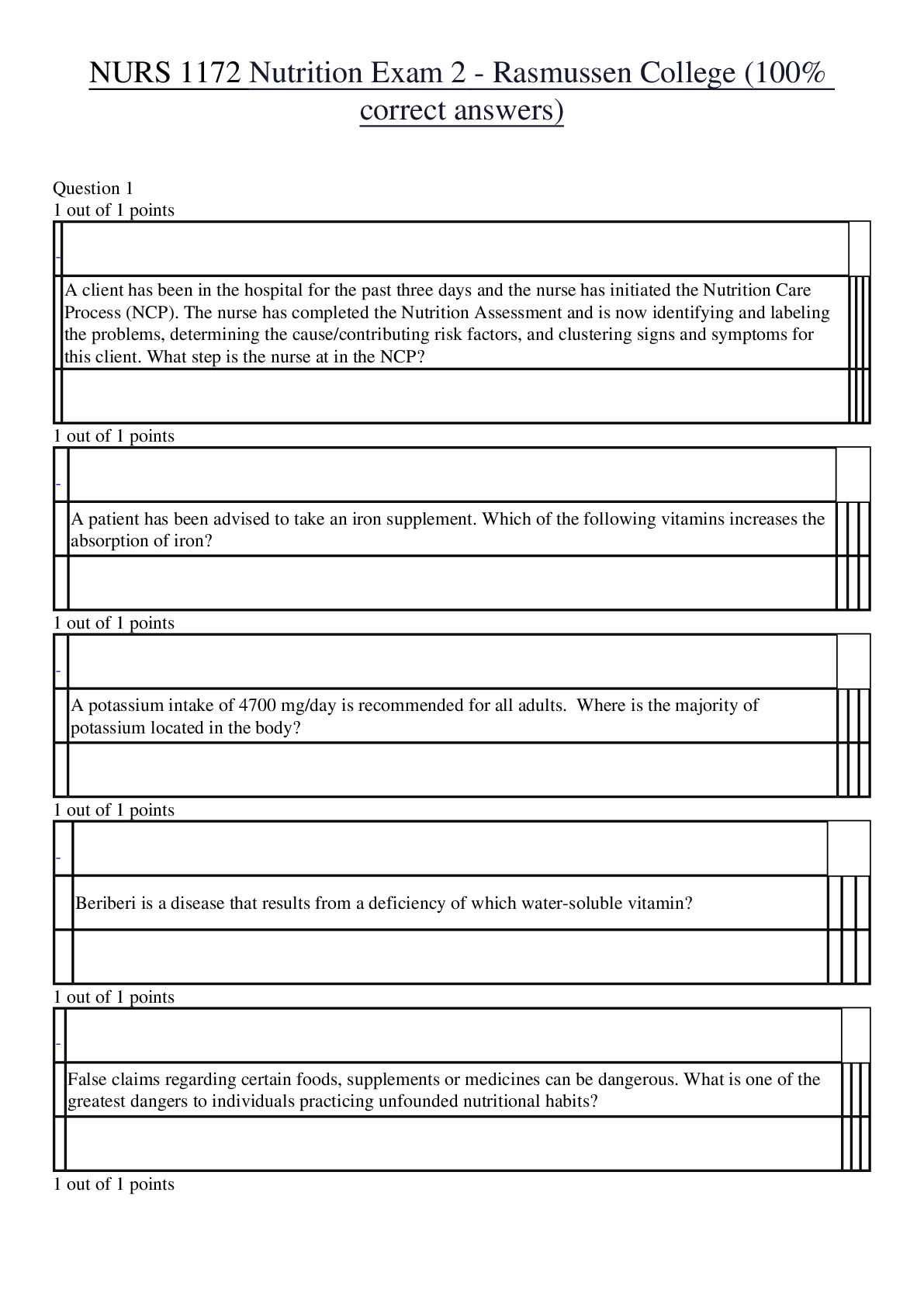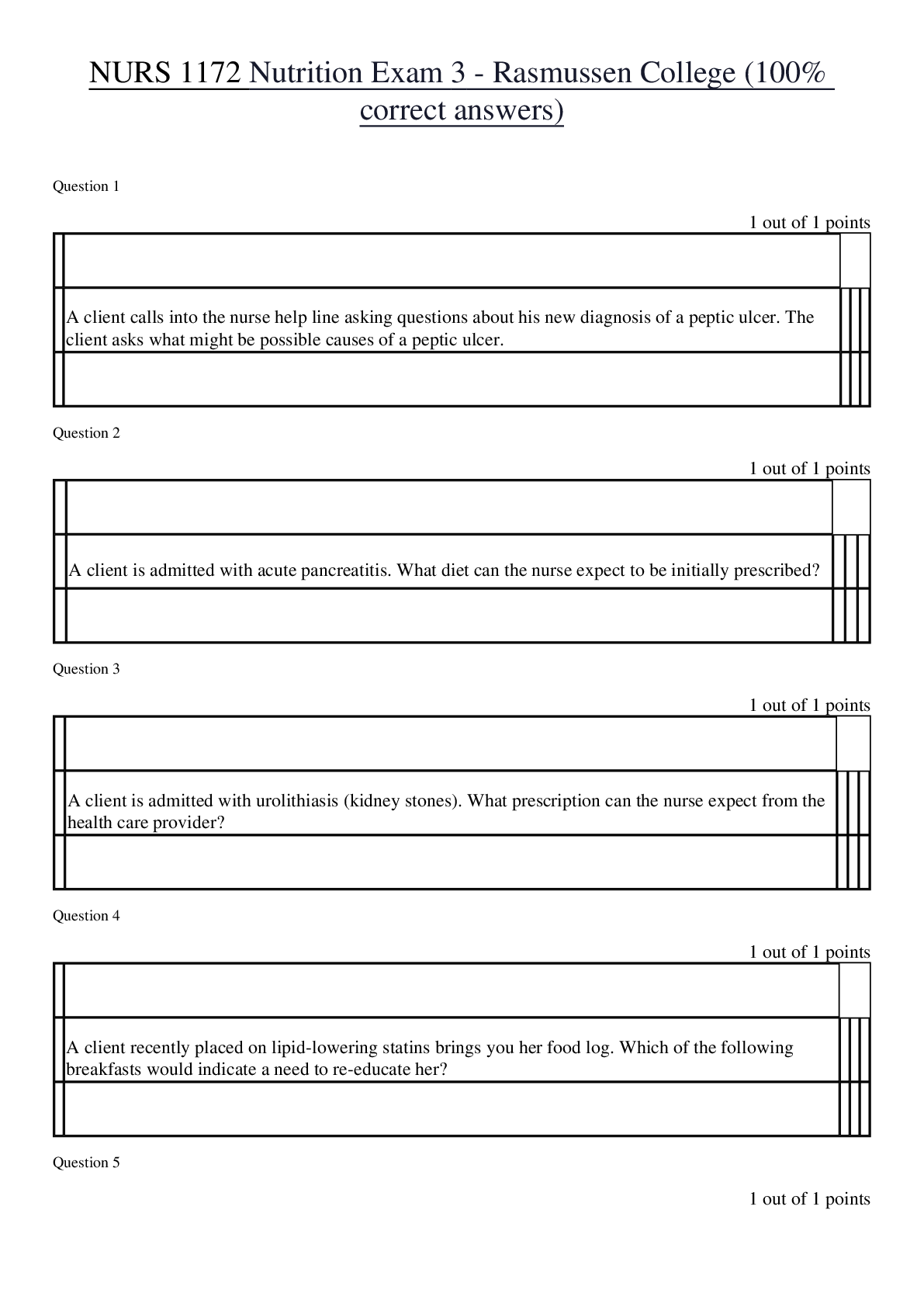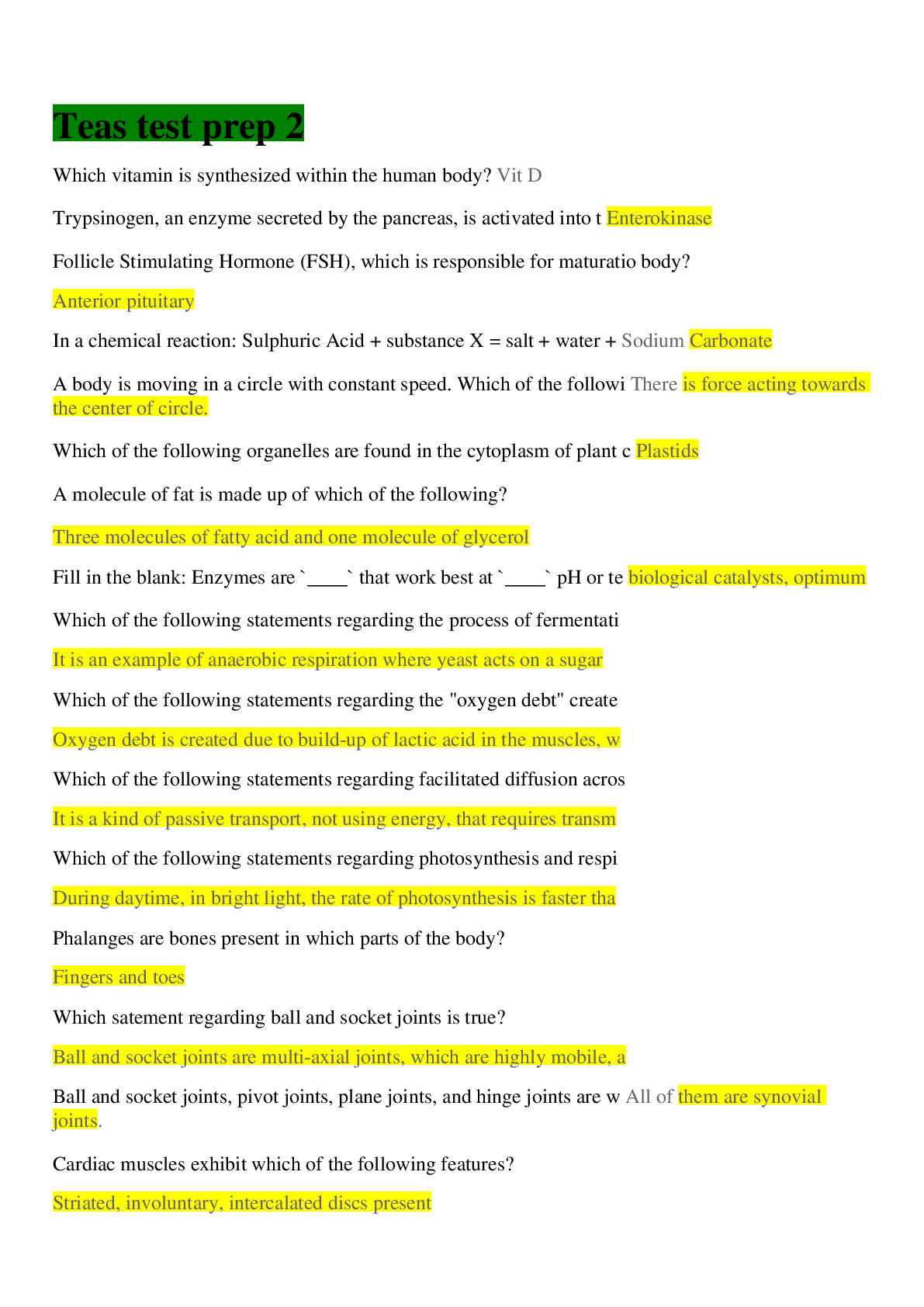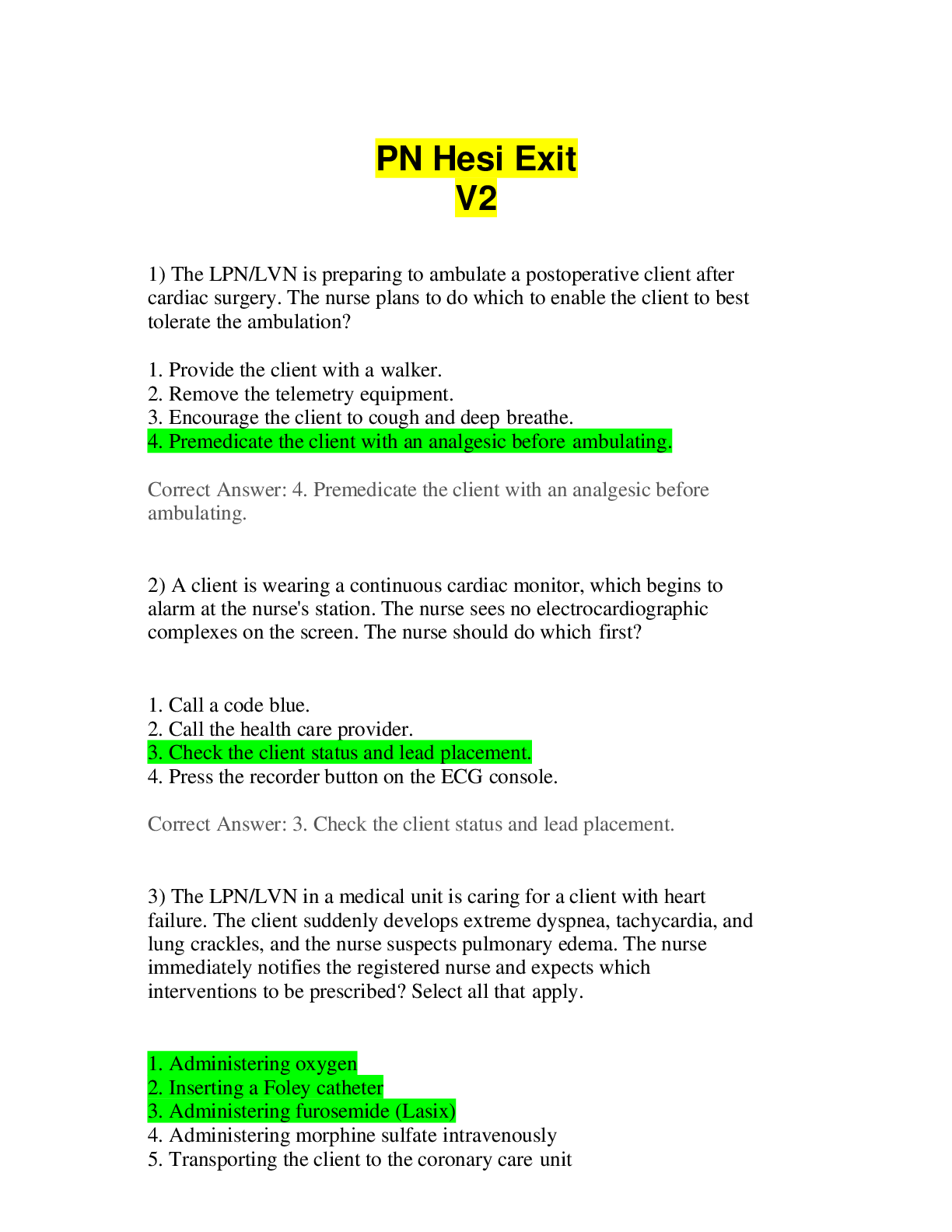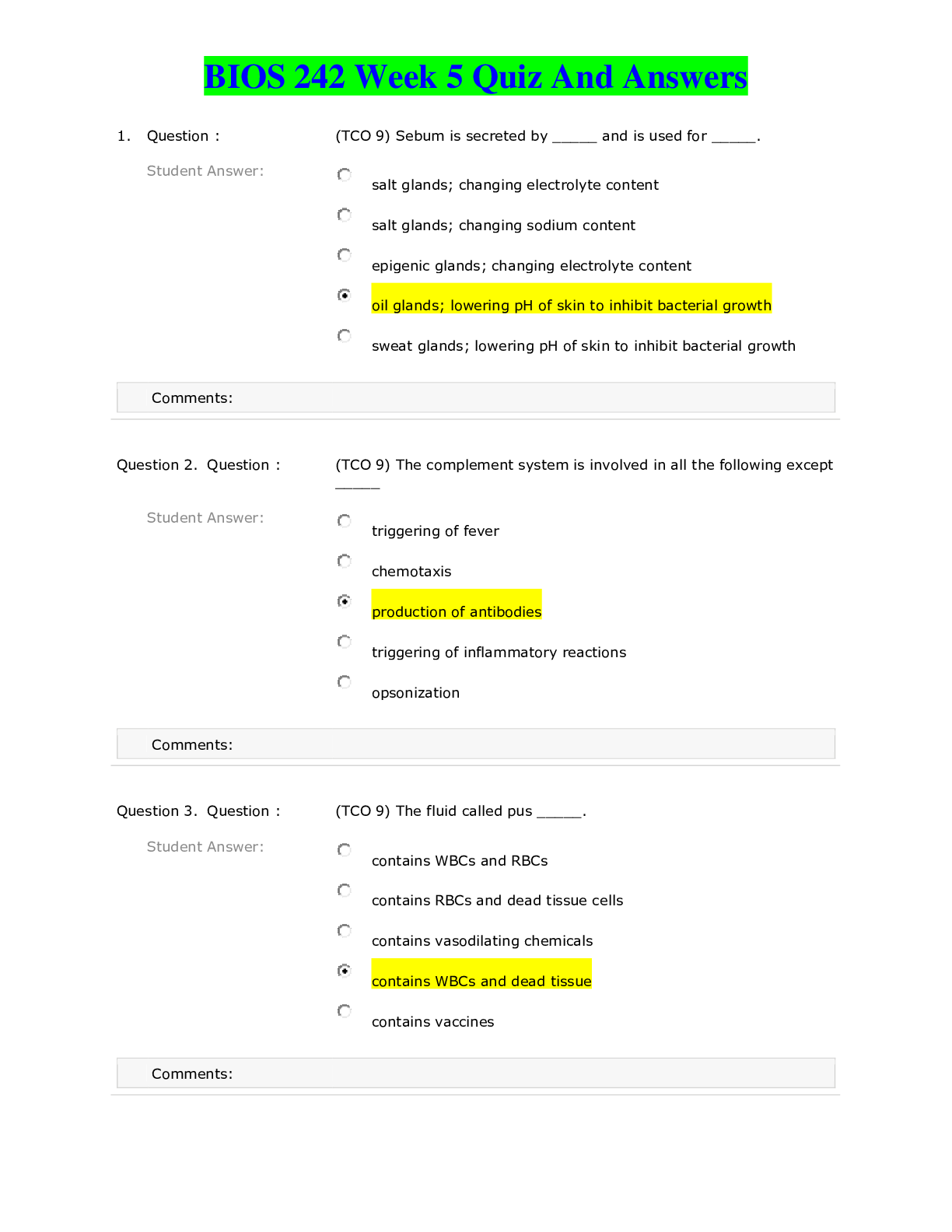*NURSING > EXAM > TNCC Written Exam TNCC Notes for Written Exam, TNCC Prep, TNCC test prepA 415 Questions with 100% C (All)
TNCC Written Exam TNCC Notes for Written Exam, TNCC Prep, TNCC test prepA 415 Questions with 100% Correct Answers
Document Content and Description Below
TNCC Written Exam TNCC Notes for Written Exam, TNCC Prep, TNCC test prepA 415 Questions with 100% Correct Answers What are the late signs of breathing compromise? - Answer--- Tracheal deviation ... - JVD What are signs of ineffective breathing? - Answer--- AMS - Cyanosis, especially around the mouth - Asymmetric expansion of chest wall - Paradoxical movement of the chest wall during inspiration and expiration - Use of accessory muscles or abdominal muscles or both or diaphragmatic breathing - Sucking chest wounds - Absent or diminished breath sounds - Administer O2 via NRB or assist ventilations with a bag-mask device, as indicated - Anticipate definitive airway management to support ventilation. Upon initial assessment, what type of oxygen should be used for a pt breathing effectively? - Answer--A tight-fitting nonrebreather mask at 12-15 lpm. What intervention should be done if a pt presents with effective circulation? - Answer--- Insert 2 large caliber IV's - Administer warmed isotonic crystalloid solution at an appropriate rate What are signs of ineffective circulation? - Answer--- Tachycardia - AMS - Uncontrolled external bleeding - Pale, cool, moist skin - Distended or abnormally flattened external jugular veins - Distant heart sounds What are the interventions for Effective/Ineffective Circulation? - Answer--- Control any uncontrolled external bleeding by: - Applying direct pressure over bleeding site - Elevating bleeding extremity - Applying pressure over arterial pressure points - Using tourniquet (last resort). - Cannulate 2 large-caliber IV's and initiate infusions of an isotonic crystalloid solution - Use warmed solution - Use pressure bags to increase speed of IVF infusion - Use blood administration tubing for possible administration of blood - Use rapid infusion device based on protocol - Use NS 0.9% in same tubing as blood product - IV = surgical cut-down, central line, or both. - Blood sample to determine ABO and Rh group - IO in sternum, legs, arms or pelvis - Administer blood products - PASG (without interfering with fluid resuscitation) What are factors that contribute to ineffective ventilation? - Answer--- AMS - LOC - Neurologic injury - Spinal Cord Injury - Intracranial Injury - Blunt trauma - Pain caused by rib fractures - Penetrating Trauma - Preexisting hx of respiratory diseases - Increased age What medications are used during intubation? - Answer--LOAD Mnemonic: L = Lidocaine O = Opioids A = Atropine D = Defasiculating agents What are the Rapid Sequence Intubation Steps? - Answer--PREPARATION: - gather equipment, staffing, etc. PREOXYGENATION: - Use 100% O2 (prevent risk of aspiration). PRETREATMENT: - Decrease S/E's of intubation PARALYSIS WITH INDUCTION: - Pt has LOC, then administer neuromuscular blocking agent PROTECTION AND POSITIONING: - Apply pressure over cricoid cartilage (minimizes likelihood of vomiting and aspiration PLACEMENT WITH PROOF - Each attempt NOT to exceed 30 seconds, max of 3 attempts. Ventilate pt 30-60 seconds between attempts. - After intubation, inflate the cuff [Show More]
Last updated: 2 years ago
Preview 1 out of 23 pages

Buy this document to get the full access instantly
Instant Download Access after purchase
Buy NowInstant download
We Accept:

Reviews( 0 )
$14.00
Can't find what you want? Try our AI powered Search
Document information
Connected school, study & course
About the document
Uploaded On
Sep 26, 2022
Number of pages
23
Written in
Additional information
This document has been written for:
Uploaded
Sep 26, 2022
Downloads
0
Views
50

